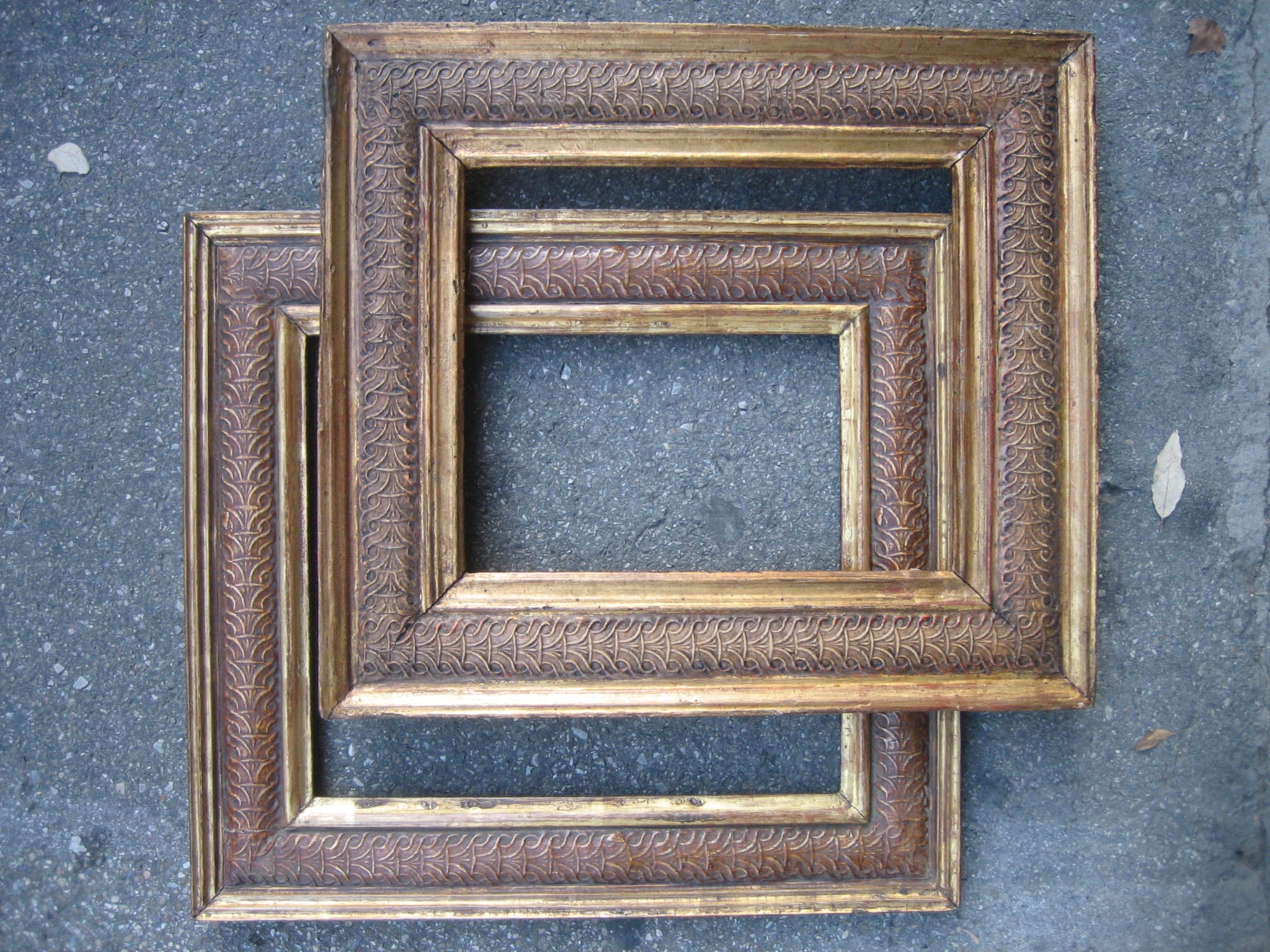Discover how ANTIQUE FRAMES FOR PICTURES add history and elegance to any photograph or artwork in your home.
Ever find the perfect photograph or painting, only to realize a generic, mass-produced frame doesn’t do it justice? If so, you’re not alone. The desire to pair treasured images with a frame that mirrors their emotional or artistic depth is exactly why ANTIQUE FRAMES FOR PICTURES remain so popular. In this guide, you’ll learn what makes antique frames special, how to identify genuine pieces, and ways to incorporate them into modern décor. By the end, you’ll be equipped to choose or restore an antique frame that complements and enhances your favorite pictures.
For a successful experience with antique frames for pictures, follow these steps:
- Why Choose Antique Frames for Pictures
- Distinguishing Authentic Antique Frames
- Popular Styles and Eras
- Assessing Condition Before Purchase
- Restoration and Preservation Basics
- Matching Frames to Your Photos or Art
- Décor Tips for Displaying Antique Frames
- Where to Find Quality Antique Frames
- Collaborating with Specialists for Custom Fit
These sections take you from discovering why antique frames matter to working with professionals for a perfect match.
Keep reading to explore how each aspect—from style identification to proper restoration—can help you find or maintain an antique frame that best showcases your cherished photographs and artwork.
1. Why Choose Antique Frames for Pictures
Antique frames offer more than mere decoration; they serve as an extension of the art or photograph they contain. Each antique frame carries its own history, reflecting the craftsmanship, design preferences, and materials of a specific era. Whether you’re framing a cherished family portrait, a contemporary painting, or a vintage photograph, an antique frame can instantly add depth and intrigue to the overall presentation.
Many people gravitate toward antique frames because they bring warmth and character to a room in a way modern frames rarely can. The intricate details—hand-carved flourishes, aged wood grain, or subtle gilding—act as conversation starters, telling stories of bygone eras. At the same time, these frames can increase the perceived value of the artwork or photo they hold, lending a sense of timelessness and sophistication.
Moreover, reusing or repurposing antique frames is a sustainable choice. Instead of opting for newly manufactured products, you extend the life of a piece that has already stood the test of time. By choosing an antique frame, you’re not just embracing a trend; you’re embracing heritage and craftsmanship, ensuring your treasured pictures receive the regal treatment they deserve.
2. Distinguishing Authentic Antique Frames
Spotting an authentic antique frame may feel challenging if you’re new to the world of vintage décor. However, a few key indicators can guide you in the right direction. Start by examining the construction of the frame. In genuine antique pieces, you’ll often find mortise-and-tenon or dovetail joints, handmade nails, or wooden pegs rather than modern staples and adhesives. These older methods suggest a level of detail typical of bygone eras.
Look closely at the wood or metal finishes. Genuine antique frames might show signs of natural wear: small cracks, irregular textures, or the warm patina that only forms over years of exposure. Be aware that not all damage signifies authenticity. For instance, some “faux-antique” frames are artificially distressed to appear older than they are. Check for consistent signs of age, such as a slightly darkened back panel or historically accurate hardware.
Provenance can also be a strong indicator. Labels from past exhibitions or galleries, inscriptions, and even notes taped to the backside all hint at a frame’s journey through the years. If you’re uncertain, seek a professional opinion from an antiques dealer or restorer. Confirming authenticity not only ensures you’re paying a fair price but also connects you more deeply to the frame’s history—an important aspect of the entire antique experience.
3. Popular Styles and Eras
Antique frames for pictures span multiple design periods, each defined by distinctive aesthetics. For instance, Baroque frames (17th century) often feature elaborate carvings, gilded surfaces, and dramatic flourishes. These statement pieces pair beautifully with formal portraits or grand, romantic paintings. Moving forward, Rococo frames (18th century) bring a playful lightness, incorporating asymmetrical scrolls and whimsical motifs inspired by nature.
Neoclassical frames grew popular in the late 18th to early 19th century, emphasizing clean lines and Greco-Roman elements like laurel wreaths and columns. Their balanced geometry suits both traditional and contemporary artworks, making them a versatile choice today. In contrast, Victorian frames embraced a more eclectic mix of influences. They can be richly ornamented, featuring layers of molding and occasional floral motifs, reflecting the era’s fascination with opulence.
Finally, Arts and Crafts frames from the late 19th to early 20th century champion simplicity and fine workmanship, often highlighting the beauty of the wood itself. Each style offers a unique window into history, and matching your photo or art to the right period frame can create a striking effect. Whether you prefer ornate gold leaf or understated natural wood, there’s an antique frame era that will complement your personal taste and accentuate the spirit of your pictures.
4. Assessing Condition Before Purchase
Before investing in an antique frame, take time to assess its overall state. Even the most exquisite design won’t shine if the frame is riddled with structural problems. Check for stability in the joints: gently press or wiggle each corner to ensure it doesn’t shift significantly. If the frame feels loose, you may need professional reinforcement or a more thorough restoration.
Next, examine surface wear. Small chips, scratches, or cracks in the wood or gesso are normal for vintage pieces, often adding character. However, extensive flaking or evidence of water damage could point to deeper issues. Pay special attention to any gilded areas. Well-preserved gold leaf typically has a mellow glow, whereas large patches of missing leaf might require re-gilding—a process that demands skill and can add significantly to restoration costs.
Don’t forget to look for insect damage, especially in wooden frames. Small exit holes or fine powder residue (known as frass) can suggest infestation. While minor damage can sometimes be treated, a heavily compromised frame may not be worth the investment. Ask the seller about any known restoration work or repairs. Transparency on past fixes helps you gauge future maintenance needs. Ultimately, a careful inspection ensures you bring home a piece that not only looks stunning but will also remain durable for years to come.
5. Restoration and Preservation Basics
Antique frames sometimes require a bit of TLC to maintain their appearance and structural integrity. If your frame has loose corners, consider using a high-quality wood glue and clamps to stabilize the joints. Filling small cracks or missing ornamentation can often be done with specialty materials like gesso or epoxy putty. Just be cautious not to over-restore—some aging can enhance the frame’s historical authenticity.
For gilded frames, gentle cleaning is crucial. Harsh chemicals or abrasive brushes risk stripping away delicate gold leaf. Instead, use a soft cloth or a cotton swab with mild soap and water. For deeper grime, consult a professional restorer who can remove layers of dirt without harming the finish. If significant portions of gilding have chipped off, re-gilding might be an option—but it demands expertise to match the original hue and texture accurately.
Once restored, basic preventive measures go a long way. Keep the frame in a stable environment, avoiding direct sunlight, drastic humidity changes, and extreme temperature shifts. Dust it gently every few weeks, and handle it by the edges to avoid putting pressure on vulnerable decorative areas. With proper care, an antique frame can remain a showstopper while preserving the legacy of the craft traditions that produced it.
6. Matching Frames to Your Photos or Art
Selecting the right antique frame for a picture is part art, part intuition. The goal is synergy: a frame that complements, rather than overshadows, your chosen image. Consider color palette first. A gold Baroque frame might enhance a formal black-and-white portrait, while a warm wooden Victorian frame could illuminate a softly colored painting or vintage photograph. Texture also matters—bold carvings pair well with detailed compositions, whereas simpler designs suit minimalistic images.
Balance the era of the artwork with the style of the frame. A modern art print can look striking in an ornate antique frame, creating a conversation piece that bridges past and present. Alternatively, a 19th-century photograph might feel more at home in a frame from its own era, highlighting a cohesive historical narrative. Experimenting with contrasts can yield dynamic results, but be sure the final look feels intentional, not haphazard.
Also think about scale. Frames shouldn’t overwhelm the artwork but rather serve as a harmonious extension of it. If the frame is too large or too ornate, it can detract from the focal point. A well-proportioned antique frame will guide the viewer’s gaze inward, where your picture takes center stage. By considering color, texture, era, and size, you ensure your photo or painting and its frame become a unified piece of décor that draws admiration from every angle.
7. Décor Tips for Displaying Antique Frames
Once you’ve selected your antique frame, showing it off is half the fun. Placement plays a critical role. Choose a spot with balanced lighting—natural light can bring out subtle details in carved wood or gilding, but harsh direct sunlight might fade colors or finishes. If you’re hanging the frame in a dimmer area, consider installing a small spotlight or picture light to gently highlight its features.
Grouping antique frames can make a dramatic statement. Arrange frames of different shapes, sizes, and styles on a gallery wall for an eclectic but cohesive look. While mixing various eras can add interest, maintain a unifying element, like a consistent color scheme or subject matter. For instance, you might display a collection of black-and-white family photos in frames from multiple centuries, tied together by the monochrome palette.
Antique frames also double as decorative objects on shelves or mantels, sometimes even without pictures. A well-chosen empty frame can act as sculptural art, framing a piece of the wall or a cluster of small collectibles. Keep in mind that each frame can highlight its surroundings just as much as it showcases its content. Whether hung traditionally, propped on a tabletop easel, or layered behind other decorative items, your antique frame can become the crown jewel of any space.
8. Where to Find Quality Antique Frames
Locating the perfect antique frame can feel like a treasure hunt, but several avenues offer promising rewards. Local flea markets and antiques fairs often feature vendors with eclectic collections, letting you examine frames in person. Estate sales are another excellent resource—especially if you spot older home décor from a similar time period to your desired style. Auction houses, both local and online, provide a chance to bid on higher-end or rare pieces with well-documented histories.
If you prefer a more curated experience, head to specialized antiques shops or galleries that focus on vintage frames. These establishments typically have knowledgeable staff who can guide you toward authentic items and share intriguing anecdotes about each piece. Online marketplaces also offer an expansive selection, though you’ll want to exercise caution—inspect photos carefully and verify the seller’s reputation.
Regardless of where you shop, ask plenty of questions. Find out if the frame has undergone previous restorations, if there’s any provenance or documentation, and whether it comes with original hardware. By keeping your criteria clear—style, size, condition—you’ll be better equipped to identify the ideal antique frame that aligns with both your aesthetic and practical needs.
9. Collaborating with Specialists for Custom Fit
Even the most striking antique frame might need adjustments to accommodate modern photographs or paintings. When dimensions don’t align perfectly, consult a professional framer or restorer. They can trim or add liners to ensure a snug, stable fit. These experts often have access to period-appropriate materials—like old-style nails, finishing waxes, or archival backings—that preserve the authenticity of the frame.
Specialists can also advise on whether to add protective glass or UV filtering, especially if you’re framing delicate media like watercolors or vintage photos. This process ensures the artwork remains vibrant without clashing with the frame’s historical vibe. They’ll help you choose the right kind of mat board, ensuring the color and texture complement the frame without overpowering the piece itself.
Collaboration is key: openly discuss your goals, budget, and timeline. A skilled framer aims to maintain the frame’s integrity while creating a safe, durable environment for the picture. By trusting professionals to handle any resizing or finishing touches, you can strike that perfect balance—achieving a display that’s both visually pleasing and historically respectful, all while making sure your artwork stays pristine for years to come.
FAQ
Are antique frames always more expensive than modern ones?
Not necessarily; prices vary by age, condition, rarity, and craftsmanship. You can often find affordable vintage gems if you shop carefully.
How do I hang a heavy antique frame safely?
Use sturdy wall anchors or locate a stud. Quality hardware designed for heavier weights ensures the frame is properly supported.
Can I display a modern print in an antique frame?
Absolutely! Contrasting a contemporary piece with an ornate vintage frame can create an eye-catching and stylish focal point.
Is re-gilding expensive?
Costs depend on how much of the gilding needs replacing and the complexity of the frame. Consult a skilled restorer for a detailed quote.
Should I replace damaged glass in an old frame?
Yes, if it’s cracked or unsafe. Period-appropriate or UV-protective glass can safeguard your artwork and complement the frame’s style.
Conclusion
Investing in ANTIQUE FRAMES FOR PICTURES is about more than simply housing a photograph or work of art— it’s an invitation to merge the past with the present. Each frame carries traces of craftsmanship and history, making it a special addition to any space. Whether you’re drawn to gilded Baroque flourishes or the understated charm of an old wooden Victorian piece, antique frames bring a sense of depth and character to your pictures. By learning to identify authentic designs, assess condition, and care for these vintage treasures, you’ll ensure that both the frame and its contents remain captivating for years to come. Ultimately, choosing an antique frame is about celebrating artistry that transcends time, allowing your cherished images to shine within a story-rich border.





